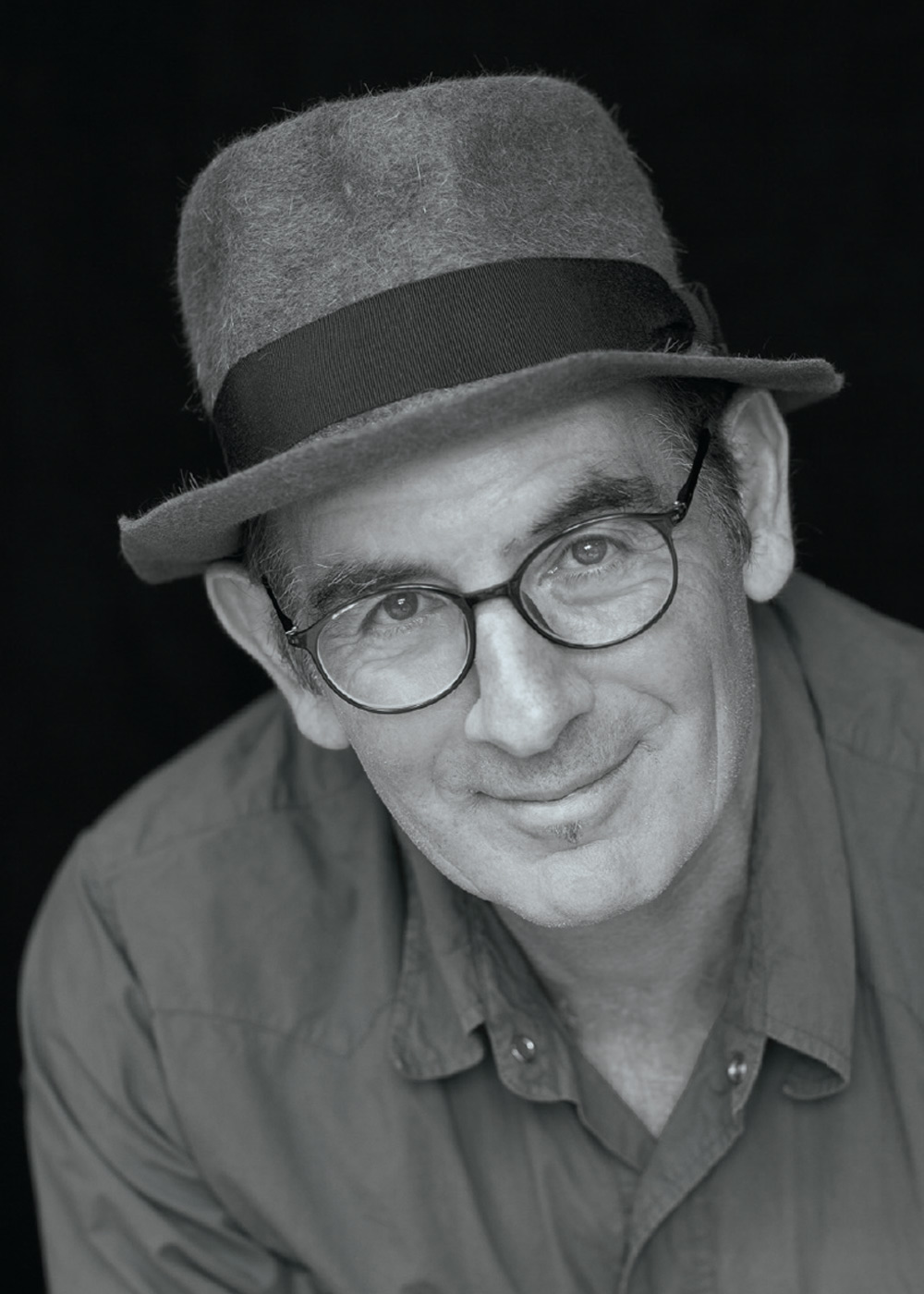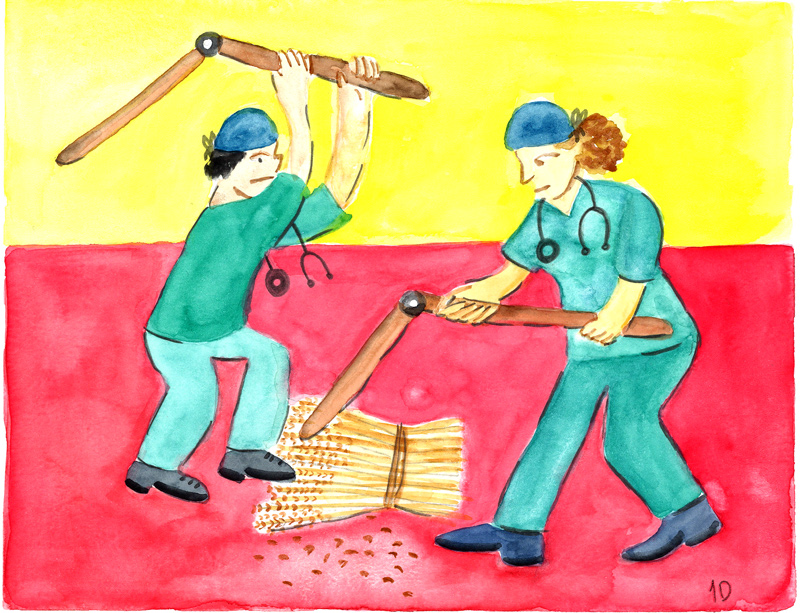

The heart of the matter
A doctor’s take on healthcare reform.
By David Galler
Oblivious to my upcoming departure from the intensive care unit at Middlemore Hospital, in my last week there a young man was dropped off at the emergency department with a stab wound in the left chest.
The knife had made its way through his chest wall and lung before piercing his pericardium and penetrating the left ventricle of his heart. Quite quickly, blood from the inside of his heart began to leak and then pour into the pericardial sac that surrounded it. As the pressure there rose, less and less blood was able to enter the heart itself, so slowly, then quite quickly, he went into a state of shock. He became increasingly pale and sweaty and had a look of impending doom on his face. As his heart rate increased to compensate for his rapidly falling blood pressure he became unresponsive and then quite suddenly but not unexpectedly, had a full blown cardiac arrest. He would have died there and then if it wasn’t for the actions of the people present in the room to help him.
It was me that intubated him and put the big line into his right jugular vein; it was my colleague from the ED who at the same time opened his left chest with a long curved incision between the ribs. He cut through the skin and intercostal muscles that run between them, then using a retractor, prised them apart to open the chest cavity. Pushing the left lung down, we could all see the damage and what we needed to do.
Using the same scalpel he slit open the bulging pericardium, releasing the pressure around the heart itself. At the top end we were pushing in fluids fast, crystalloids then uncrossmatched universal donor blood and doses of intravenous adrenaline. As his pericardium emptied we saw the wound in his ventricle, and quite carefully, stopped that leaking, initially with a finger, then with a series of stitches.
Oxygen, fluids, adrenaline and then, whammo, his useless heart was useless no more, it fell back into old habits and began to beat, then beat more strongly as we continued to resuscitate him. There was hope and optimism for him too, because all of this happened in minutes; a witnessed cardiac arrest followed by immediate resuscitation meant it less likely he would suffer any long-term damage.
I stopped to look around. We were a small team of six in one of the resuscitation rooms in the emergency department. Our patient, his chest still open, was regrouping in front of our eyes, but the place looked like a bomb site. It was time to go, to tidy him up in theatre. We collected our stuff, gently packed and covered his wound, connected him to a portable monitor, did our last minute checks and made for the lifts to the first floor.
It’s hard to describe the feeling I had handing him over to the team in theatre. Relief and gratitude best describe it, and knowing too that they were bloody good and this boy was in safe hands. Breathless from the drama, I leant back against the cool wall of the operating theatre. Calmer now, I watched my colleagues work.
Again a team, but bigger, maybe 12 people, including two anaesthetists, an anaesthetic tech, several theatre nurses, an orderly, a medical student and three surgeons – all women and brilliant. I liked this place. It was cleaner and more orderly than where we had come from. The theatre gleamed, the lights shone brightly, the second hand on the big clock moved more slowly, the monitors bleeped reassuringly and the data displaying strong signs of life were visible for all to see on the giant screen on the opposite wall. A cardiac surgeon and his registrar from Auckland Hospital arrived to help. Dressed in scrubs, each carried a small suitcase filled with their gear.
Everyone had their jobs and I watched as they worked alongside and around each other, doing their bit to help, each task important. There was silence in the room, apart from the occasional word and the happy sounds from the monitors. The kid did well in the end. He came to our ICU for a few days, had a week in hospital and walked out.

“Don’t be fooled, we still live in feudal times,” says David Galler. Illustration: Isabella Dampney
Not long after, I left that place for good. It was my second attempt, almost a year to the day after my first was stymied by the pandemic. The decision to go was mine, and I went with some sadness, but I knew I needed to make that call. Like leaving a bach, it is best to leave on a sunny day than be forced out by stormy weather.
During those last months, my work brought me new riches. Instead of being totally immersed in the moments of drama, I made the effort to step aside and look more closely at them. What I saw was the dedication and expertise of my colleagues. They were brilliant and kind and skilled, and when I watched them do their thing I saw small acts of love.
That was two years ago, and the real sense of pride in the work I did over such a long period remains, and in turn renews my appreciation of the awesome nature of the work my colleagues continue to do today.
However, admiration is not enough to sustain a thriving workforce. We only have to go back a few years to the beginning of the Covid pandemic to be reminded of that – the applauding crowds on balconies across northern Italy, Europe, the UK and finally here — a time when health workers were hailed as heroes. But that is long forgotten. All that is left are the wounds on top of what was already an overwhelmed workforce.
The sector suffers from years of deliberate underinvestment and an unchecked rise in demand. Both are driven by a market model that prioritises short-term profits over the wellbeing of people and the planet. As that demand grows, staff are put under more and more pressure and because workforce planning has been absent for decades they simply can’t keep up. As a result, people are overwhelmed; some burn out and many leave for a more orderly life in the private sector. As that happens, governments make things even worse by outsourcing scheduled surgeries and other procedures to the private sector, further diminishing the capability of the public sector. The queues in our emergency departments skyrocket and the waits for surgery lengthen. It is a death spiral.
The answer is to invest in our workforce. While we do that, our public servants need to learn to walk alongside our clinical teams, to value and support them, understand the nature of their jobs and the barriers to their success, all the while investing in expanding their numbers.
The trajectories of our two greatest assets — people and the planet — are intimately linked. We rise and fall together, and right now we are on a spectacular fall. As the planet burns, life for ordinary people is becoming increasingly difficult, making it near impossible for many to reach their potential. In South Auckland, children are not going to school because they are at work packing shelves in supermarkets to supplement the double incomes of their poorly paid parents struggling to afford rent and food. At the same time, massive profits are being made by banks mostly owned by people who don’t even live here. Why is our health system’s greatest asset, our people, so worn down and angry that they strike? There is a cancer at work here, and that cancer is growing and metastasising to further embed inequity in our society. Yes we are a modern society, but don’t be fooled, we still live in feudal times.
Health and other social services have been swept up in this maelstrom. Over time, their inherent value has been reduced to their cost or saleable value. Any two steps of gain we might make in one direction will likely be nullified by two steps back because of decisions made in isolation elsewhere. A simple example: we choose to pour more and more money into struggling healthcare services, much of that to treat the consequences of preventable conditions. Diabetes is a good example. The major cause of diabetes is obesity, that is mainly caused by promoting easy access to unregulated, ultra-processed, unhealthy food. So our approach is akin to funding firefighting while enabling arsonists. We are at sea in a chaos of public policy, reacting to the winds and waves of the moment, the market, short-term profits and quick and easy political gains. It’s simply not good enough.
Health has been buffeted in that chaos for a long time now. Like other countries, we have pivoted back and forth with health reforms. Of all of them, the competitive model of health provision that arose out of the Green and White Paper of 1991 has had the most enduring impact. That reform was heavily influenced by the broader political philosophy of the day, defining and reducing the overall value of our “investment” in social services, including health workforce, facilities and outcomes. A competitive model pitted one organisation against another and created an enduring barrier to many in health working collaboratively.
Recently, much has been written and reported about the state of our health service, mostly highlighting its failures. Those stories are important and they are real, but they are not all new, and it is simply wrong to shift the blame for them to the new health entities created by the Pae Ora legislation as part of the health reform. What we are hearing, seeing and experiencing right now is what other jurisdictions are hearing, seeing and experiencing — our chickens coming home to roost. Those chickens include our collective failure to invest in comprehensive approaches to maintain good health for people where they live and work; a lack of investment in care services and growing the capacity and capabilities of our workforce; a failure to promote networks of care in and across our community and hospital sectors; and not building the facilities needed to create a first world health service.
The current reform arose from real failings of the DHB model. These were well canvassed by the Simpson review of our health and disability system initiated by the first Ardern-led Labour government. The most notable of those shortcomings was the worsening of already bad health outcomes for Māori, Pacific peoples, those living in rural locations, LGBTQI communities and many with disabilities.
The DHB model we have now replaced was designed and introduced in Helen Clark’s first term (1999-2002) to better connect with local populations by creating 24 districts (reduced over time to 20), each having a majority of elected board members and population-based funding to provide for the health needs of their communities. But no model or structure is perfect and there were problems with that approach. The DHB reform followed an era of neoliberal thinking and remained subject to its vicissitudes. It also became evident that many of those elected members didn’t represent the broad interests of their populations, and didn’t have the necessary governance skills to manage such complex organisations. Any independent views, no matter their merit, struggled to gain traction in a system that was micromanaged by the Ministry of Health on behalf of ministers who were and still are the ultimate decision makers.
Much of the thinking behind the reform centres on opportunities to work more closely across the entire system, to think nationally, plan services regionally and deliver them locally.
In retrospect, the only way such a large number of DHBs would have been able to cater for the health needs of each of their populations and ensure all had equitable access to services was for them to work closely together. Sadly, despite some fine examples of workarounds led by like-minded clinicians, there were few to no effective incentives for that to happen, nor were opportunities to bridge the wide gulf between community and hospital-based services realised, so as time went by, inequities broadened and deepened. Plus ça change, plus c’est la même chose.
The latest health reform is an attempt to do better. The purpose is transformational change, but transformation is a ubiquitous and misused term. The mere utterance of the word provokes cynicism in those that hear it. However, when used appropriately it comes with muscle. Transformation is an outcomes-related concept to specifically address how we might best utilise the skills of our people, and reorganise our resources, money and technologies to deliver on the specific outcomes in the original cabinet paper; to ensure that over time we progress towards realising them.
The purpose of the reform is to deliver on those outcomes: our obligations to Te Tiriti o Waitangi and inequity more generally; comprehensive primary care delivered close to where people live; access to high-quality emergency and specialist care when people need it; making better use of digital technology; and most critically, ensuring our health and care workers will be valued and well-trained for the jobs they need to do.

Photo: Shutterstock
Much of the thinking behind the reform centres on opportunities to work more closely across the entire system, to think nationally, plan services regionally and deliver them locally. Merging all of our DHBs into Te Whatu Ora (Health New Zealand) facilitates that, and by creating Te Aka Whai Ora/Māori Health Authority there is a better opportunity to customise services to Māori in ways that make a genuine connection with them.
For these past two years I have worked hard on a critical element to the success of the reform, the development of the NZ Health Charter Te Mauri o Rongo, a statement of the values, principles and behaviours expected of the organisations, teams and individuals in the health system. Ultimately, it is the culture of work and how we work together that will determine the success of the reform.
Te Mauro o Rongo creates a significant point of difference from all we have done in the past. It will be a public document that values and supports the workforce, a document created through an act of parliament, owned by a minister and tabled in Parliament. Never before have we had a foundation document like this to hold us all to account for our behaviours and how we might work together to improve health outcomes for all.
In the creation of this, together with a small team, I listened to the hopes and aspirations of many in the health workforce. So many people up and down the country gave up their time to talk with us. Individuals, unions, academics, consumer groups, Māori health providers, the disabled and so many more. They ranged from people making millions in public and private practice to minimum-wage employees. All saw opportunities in the reform and the charter to work more closely together, have their voices heard, build the networks we know we need across our communities, and better meet the needs of those we serve close to where they live. Our small team were humbled by what we heard and developed a real sense of obligation to those people to ensure that this charter would reflect their views and be brought to life in the health sector in partnership with them.
Certainly the first year of the reform has been tough. Much has happened, but for many working in health nothing has changed. Those that remain are losing hope against a rising tide of need.
It is early days. This will be a long process. The problems we are facing have been decades in the making. We need to make this work and all of us must take an interest to ensure that happens.
This story appeared in the October 2023 issue of North & South.


